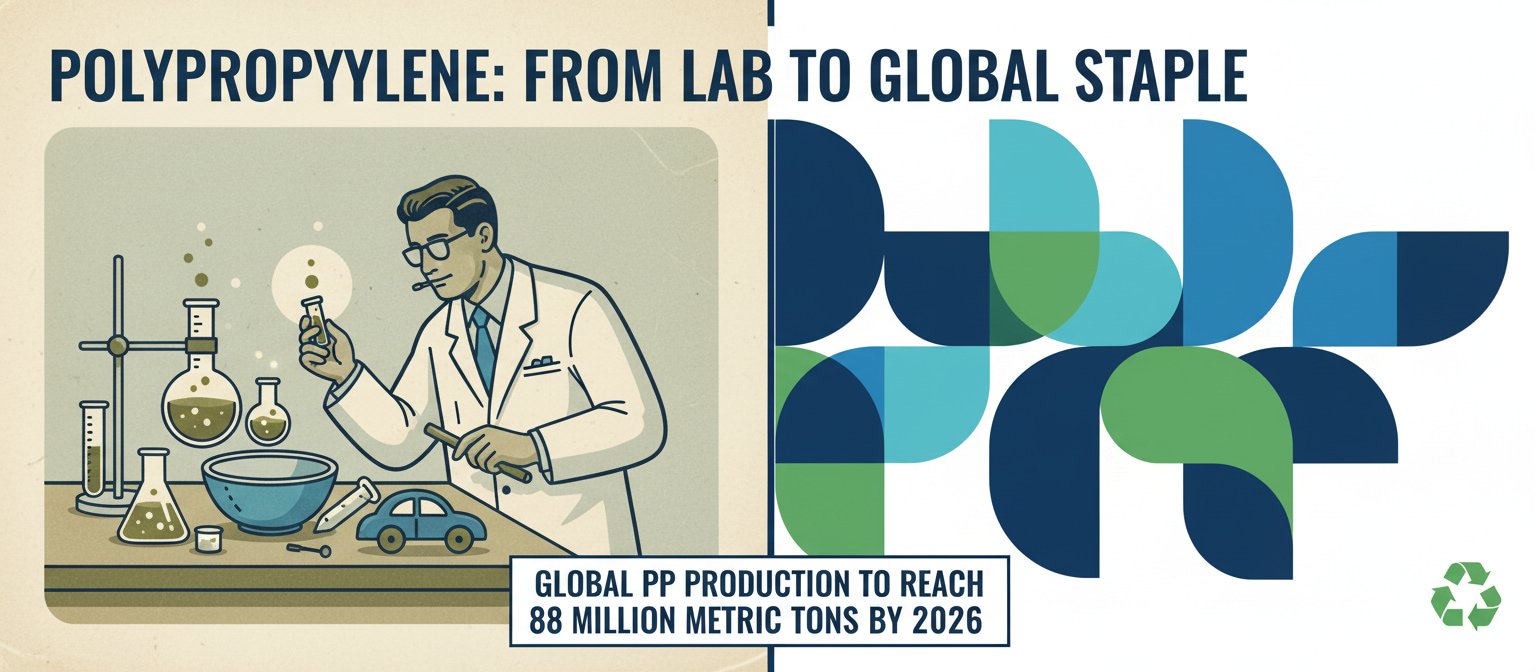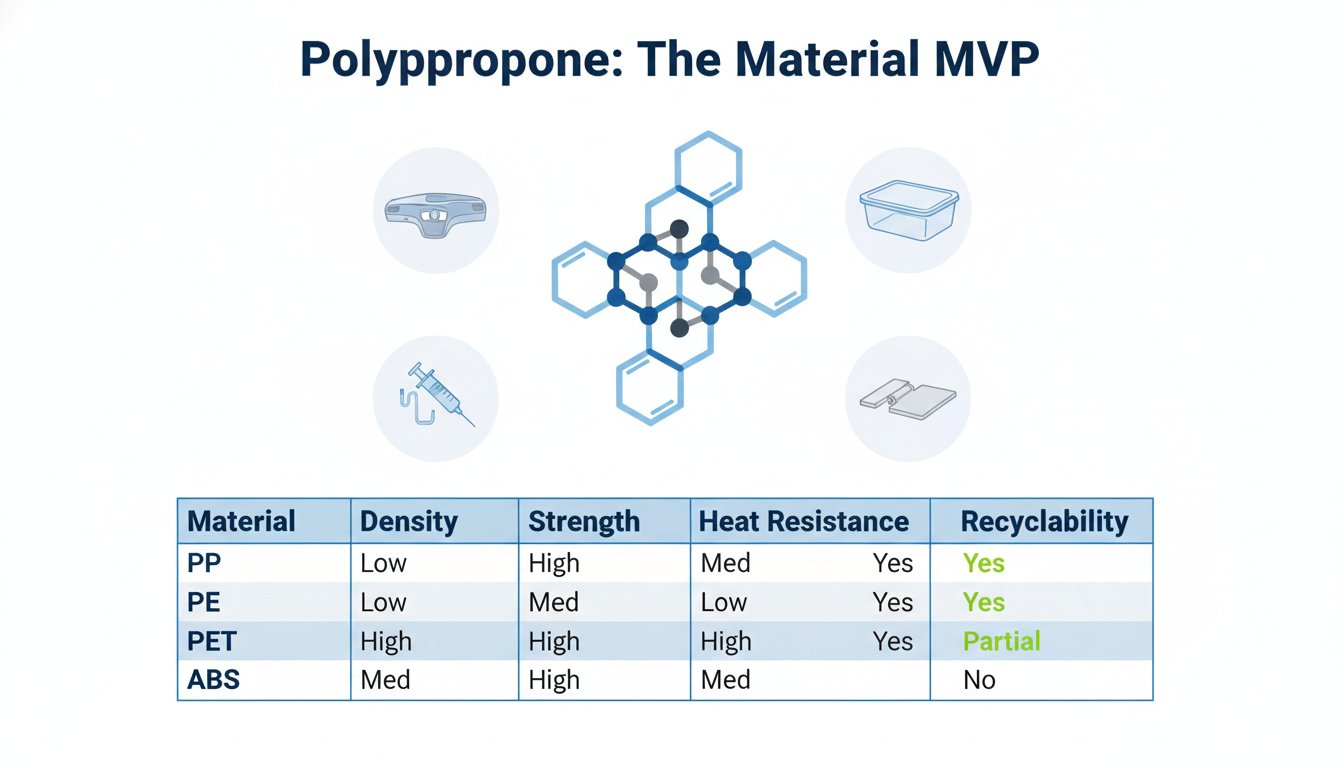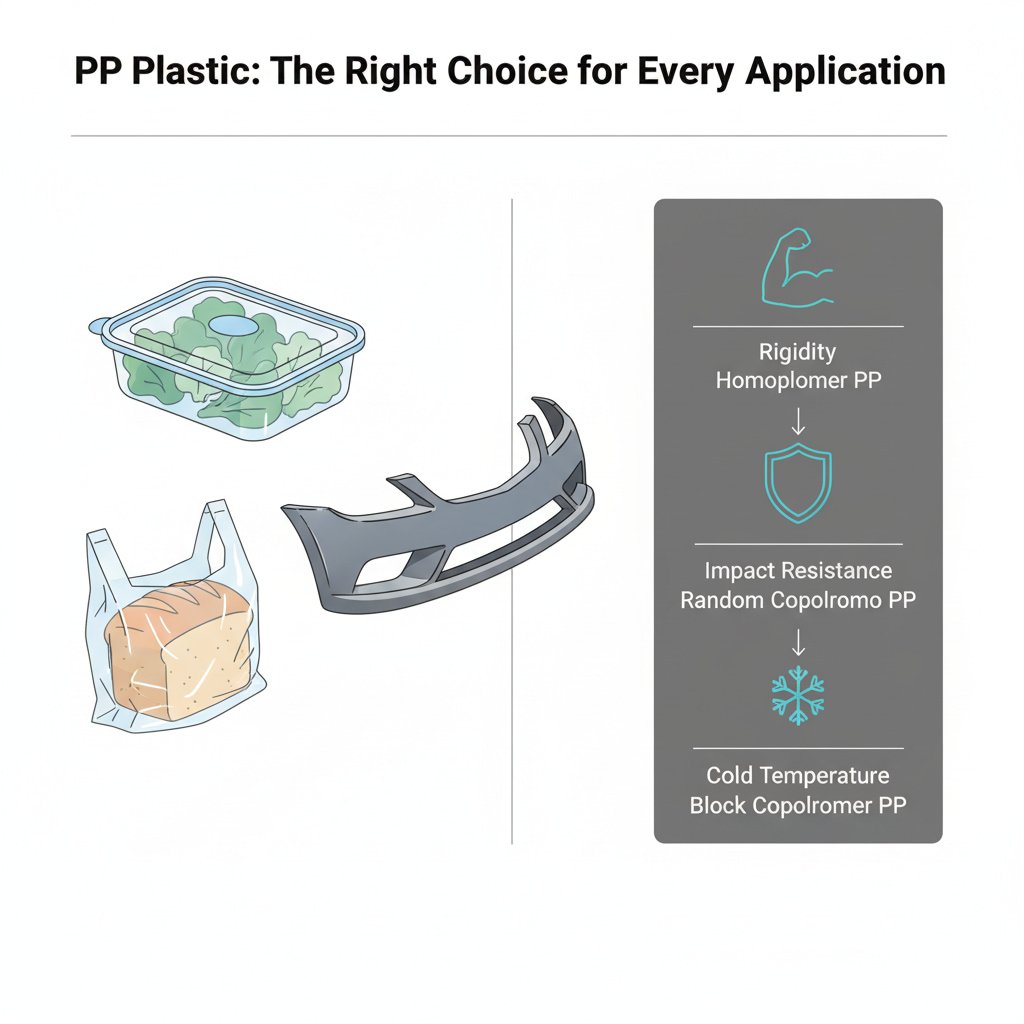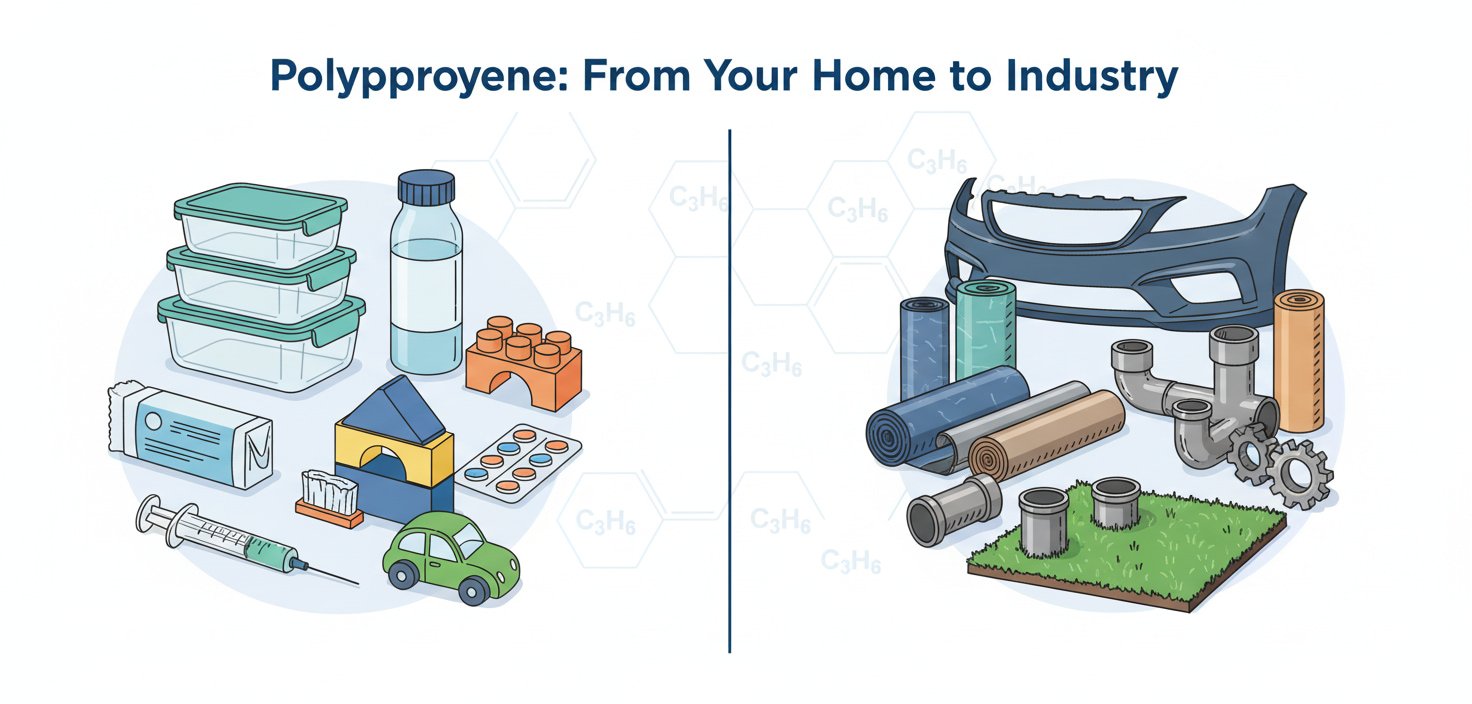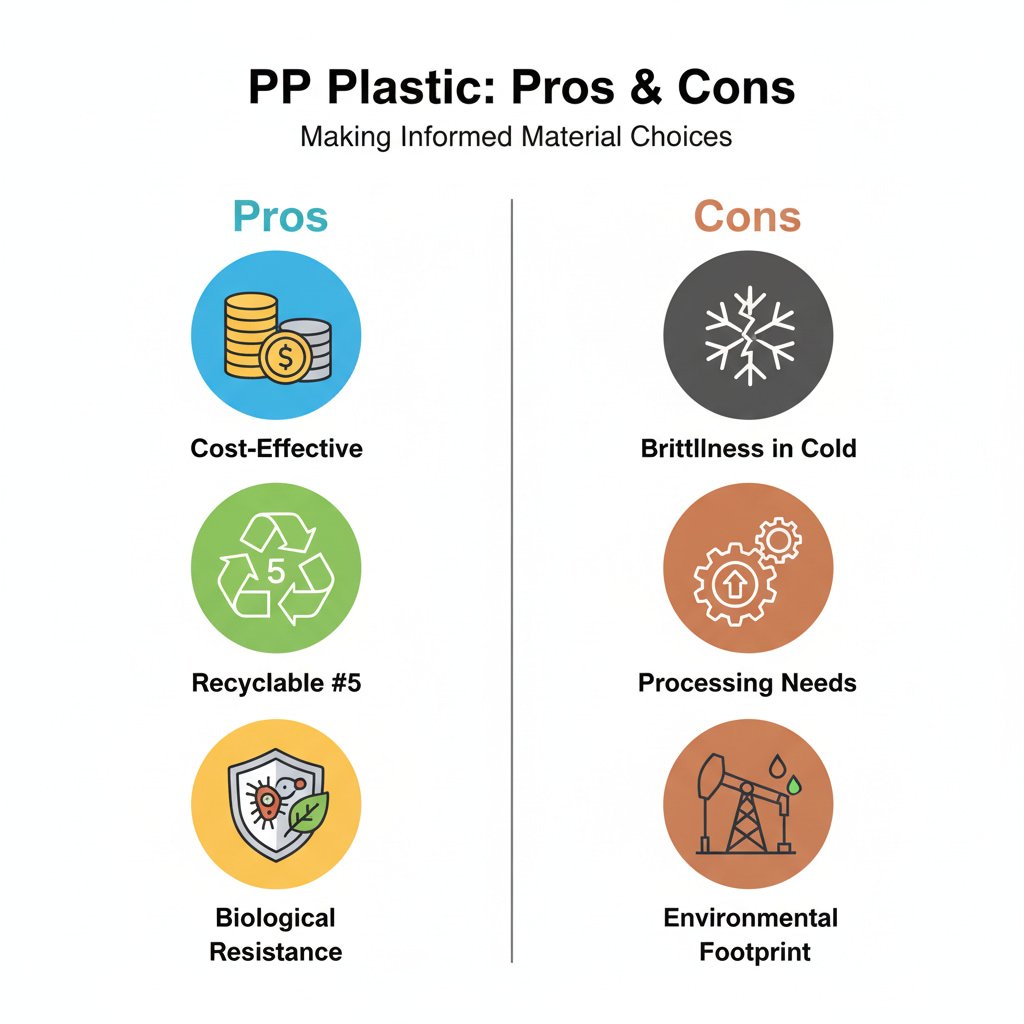PP Plastic Definition: Properties Uses & Benefits Explained
If you’ve ever wondered what PP plastic really is and why it’s everywhere—from your food containers to automotive parts—you’re in the right place.
PP plastic definition might sound like just a chemistry lesson, but understanding this lightweight, tough material can change how you shop, recycle, and even craft. In this quick read, you’ll get the essentials on polypropylene—what makes it unique, where it shines, and why it matters in today’s world. Stick around, and you’ll see why PP is more than just another plastic; it’s a versatile workhorse shaping modern life.
What Exactly Is PP Plastic?
Polypropylene, or PP plastic, is a type of thermoplastic polyolefin made by linking propylene molecules through a process called polymerization. This gives PP a rigid and semi-crystalline structure, making it strong but lightweight. Plus, it’s recyclable, which helps reduce environmental impact.
Chemically, PP is a hydrocarbon with the repeating unit (C₃H₆)ₙ, meaning it’s made of carbon and hydrogen atoms arranged in long, linear chains. These chains can form different patterns—called isotactic, syndiotactic, or atactic—which affect the material’s properties like strength and clarity.
You might wonder how PP stacks up against similar plastics, especially polyethylene (PE). Here’s the quick difference: PP has a density between 0.895 and 0.93 g/cm³, making it one of the lightest commodity plastics. It’s also more rigid than PE, which means it holds its shape better under stress—a big plus for many industrial and consumer uses.
In short, PP plastic is a versatile and lightweight polymer, uniquely positioned among thermoplastics for durability and recyclability.
A Brief History: From Lab Discovery to Global Staple
Polypropylene (PP) was first synthesized in 1954 by Italian chemist Giulio Natta. By 1957, it hit the market commercially and quickly became a key player in plastics manufacturing.
Today, global polypropylene demand is in the mid-80-million-ton range per year in the early 2020s and is projected to keep climbing over the next decade—clear proof of how essential this material has become worldwide.
A major breakthrough behind this growth was the development of catalysts like Ziegler–Natta, which made large-scale and cost-effective production possible. Without these catalysts, PP wouldn’t have become the versatile material we rely on today.
In the post–World War II era, PP started to compete strongly with metals and other plastics. Its light weight, chemical resistance, and durability made it a favorite for industries looking to innovate and save on costs. This shifted manufacturing trends, opening new possibilities for products ranging from automotive parts to consumer goods.
Today, polypropylene is playing an important role in the circular economy. Topfeel is committed to sourcing responsibly produced PP, focusing on sustainability and recycled content. This approach helps reduce environmental impact while keeping PP plastic relevant and in-demand for US markets and beyond.
Key Properties That Make PP a Material MVP
Polypropylene (PP) stands out thanks to its balanced mix of features that fit a wide range of uses, especially in regions where lightweight and durable materials are in demand.
Physical Traits
- Low density: At about 0.90 g/cm³, PP is one of the lightest commodity plastics. That helps reduce shipping costs and makes products easier to handle.
- High tensile strength: With a Young’s modulus between 1300 and 1800 N/mm², PP offers solid rigidity without being brittle.
- Flexibility options: When blended as ethylene copolymers, PP gains extra flexibility, perfect for applications needing some give, like softer packaging or hinges.
Thermal and Chemical Resistance
- Melting point: PP melts between 160–170°C, making it heat-resistant enough for microwave-safe containers and many automotive parts.
- Chemical resistance: It’s inert to many acids, bases, and common solvents, which is why it’s favored in medical devices and food packaging.
- UV stability: PP can resist sun damage well, especially when stabilizers are added, extending its outdoor use.
Mechanical Advantages
- Fatigue resistance: PP endures repeated bending, ideal for living hinges on containers and flip-tops.
- Electrical insulation: Good for electronic components needing a non-conductive material.
- Low moisture absorption: Keeps materials dry and stable, which matters in construction and textiles.
Property Comparison: PP vs. PE, PET, and ABS
| Property | PP | PE | PET | ABS |
|---|---|---|---|---|
| Density (g/cm³) | 0.90 | 0.91–0.96 | 1.38 | 1.04 |
| Heat Tolerance (°C) | 160–170 | 120–135 | 250+ | 90–110 |
| Cost | Low | Low | Moderate | Higher |
| Rigidity | Moderate–High | Lower | High | High |
PP hits a sweet spot with good heat resistance, light weight, and affordable cost compared to these common plastics.
A Small Heads-Up
- Flammability: PP is flammable but can be treated with flame retardants.
- UV degradation: Without stabilizers, prolonged sun exposure can cause brittleness and cracking—adding UV inhibitors helps avoid this issue.
Overall, PP’s mix of strength, chemical resistance, and cost-efficiency makes it a go-to option for many industries.
Types of PP Plastic: Tailoring the Material to the Task
PP plastic comes in different types to match specific needs, making it versatile across industries.
Homopolymer PP
This is the pure form of polypropylene. It’s known for high stiffness and good clarity, making it perfect for rigid packaging like clear containers and lids.
Copolymer Variants
- Random copolymer: Offers better impact resistance and a translucent look. It’s great when you need some flexibility without losing strength.
- Block copolymer: Tougher at low temperatures, ideal for applications where cold impact matters—think outdoor gear or automotive parts.
- Ethylene–propylene blends: These provide a balance of flexibility and strength tailored for various uses.
Fiber and Film Forms
- Woven fibers: Common in textiles like ropes and carpets.
- Blown films: Used for bags, wraps, and lightweight packaging.
Enhanced Grades
- Filled types: For example, glass-reinforced PP adds strength and heat resistance, favored in automotive parts.
- Nucleated PP: Designed for faster processing and improved clarity in manufacturing.
Quick Selection Guide
- Need rigidity and clarity? Choose homopolymer PP.
- Want impact resistance and flexibility? Go for random copolymer.
- Working in cold conditions? Block copolymer is your best bet.
- Looking for enhanced strength? Consider filled or reinforced grades.
This range makes PP plastic a go-to choice for plenty of everyday and industrial uses, combining performance with cost-effective solutions.
Where You’ll Find PP in Action
Polypropylene (PP) is everywhere—both in your home and in industries around the world. Here’s where you’ll typically spot it:
Consumer Goods
- Food containers: PP is popular for microwave-safe dishes and storage tubs because it’s heat-resistant and won’t easily deform.
- Toys and housewares: Lightweight, sturdy, and suitable for kids’ toys and everyday kitchen items.
- Medical devices: Syringes, specimen bottles, and other healthcare tools use PP for its chemical resistance and safety.
Packaging Prowess
- Bottles and caps: PP is favored in pharmaceuticals and personal care for its inertness—it won’t react easily with chemicals or medicines.
- Films and wraps: Used for flexible packaging where durability and clarity matter.
Automotive and Industrial Uses
- Bumpers and battery cases: PP’s durability and lightweight profile help improve fuel efficiency by cutting vehicle weight.
- Textiles: Ropes, carpets, and upholstery often use PP fibers for strength and moisture resistance.
- Construction: PP additives reinforce concrete, adding toughness without extra weight.
Niche Uses
Lab equipment, sports gear, and even specialized products like earthquake-resistant soil stabilizers rely on PP for its unique mix of strength and flexibility.
Case in Point
Brands working with Topfeel Bag use PP in structural components such as PP hard bottom plates and inserts inside structured cosmetic bags and train cases. This keeps bags upright, organized, and travel-ready while staying lightweight and durable for daily use and pro-level makeup kits.
The Upsides and Potential Drawbacks of PP Plastic
Let’s talk about what makes PP plastic a solid choice—and where it can fall short.
Benefits of PP Plastic
- Cost-effective: Cheaper than many engineering plastics, making it great for everyday use.
- Recyclable: Marked as plastic #5, meaning it’s often accepted in recycling programs.
- Biologically resistant: Doesn’t readily support mold or bacterial growth, a plus for food and medical uses.
Challenges with PP Plastic
- Brittle in cold: Can crack at low temperatures, so not the best for freezing conditions.
- Processing needs: Requires appropriate melt flow rates (MFR) for smooth injection molding and consistent part quality.
- Environmental footprint: Mostly fossil-fuel based, but new bio-PP options and higher recycled content are helping reduce this impact.
Balanced View on Safety
- BPA status: PP is naturally BPA-free and generally shows low levels of chemical leaching compared with some other plastics.
- Food-safe: Widely regarded as one of the safer plastics for food contact and commonly used in yogurt cups, food tubs, and similar containers.
| Feature | PP Plastic | Engineering Plastics | PVC |
|---|---|---|---|
| Cost | Low | Higher | Low |
| Recyclability | Yes (#5) | Varies | Limited |
| Mold/Bacteria Growth | Resistant | Depends | Can support growth |
| Cold Temperature Use | Brittle below freezing | Better in some grades | Flexible |
| Food Safety | FDA-approved, low leach | Some BPA concerns | Potentially less safe |
Understanding these pros and cons helps you decide when PP plastic fits your needs—whether it’s for packaging, automotive parts, or household items.
Is PP Plastic Right for You?
When it comes to health, polypropylene (PP) plastic stands out as a generally safe choice. It is FDA-approved for food contact, does not contain BPA, and is widely used in food packaging and medical products. Most common worries you hear about plastics and hormone disruptors focus on other materials, not PP.
Recycling PP is pretty straightforward since it carries the recycling code #5, which many local programs recognize. Globally, PP recycling rates are improving, though there’s still room to grow. Here are some simple tips to help:
- Rinse containers before recycling
- Check with your local recycler if they accept #5 plastics
- Avoid mixing PP with other plastics to prevent contamination
From an eco perspective, PP often takes less energy to produce than heavier alternatives like glass or metal. Many brands are already shifting to recycled-content PP, cutting down the carbon footprint. Topfeel is committed to responsibly sourcing and increasing recycled PP in its products, helping move the circular economy forward. Guidance from agencies like the U.S. FDA also supports the safe use of recycled plastics for food packaging when proper processes are followed.
Looking ahead, bio-based PP options are coming into the market, reducing reliance on fossil fuels. Though microplastic concerns exist across all plastics, responsible production and recycling practices can minimize this impact. For a more sustainable choice, seek out products with recycled or bio-based PP whenever possible.
References
- PP (isotactic): Polypropylene – NETZSCH Polymers – https://polymers.netzsch.com/Materials/Details/11
- Polypropylene Density | All You Need To Know – PlasticRanger – https://plasticranger.com/polypropylene-density/
- Polypropylene Properties & Characteristics Explained – Palmetto Industries – https://www.palmetto-industries.com/polypropylene-properties/
- Giulio Natta and the Isotactic Polypropylene – Engineering and Technology History Wiki – https://ethw.org/Giulio_Natta_and_the_Isotactic_Polypropylene
- Polypropylene | Research Starters – EBSCO – https://www.ebsco.com/research-starters/chemistry/polypropylene
- Global Polypropylene Market Volume to Reach 135.05 Million Tons by 2034 – Towards Chem and Materials – https://www.towardschemandmaterials.com/insights/polypropylene-market
- The Ultimate Guide to Food-Grade and Food-Safe Plastics – Acme Plastics – https://www.acmeplastics.com/content/the-ultimate-guide-to-food-grade-and-food-safe-plastics/
- Is It Safe? How Toxic Is Polypropylene? – Plastic Practical – https://plasticpractical.com/is-it-safe-how-toxic-is-polypropylene/
- Is Plastic Recycle 5 PP Safe? Unpacking the Health Facts – Welly – https://welly.it.com/is-plastic-recycle-5-pp-safe-unpacking-the-health-facts
- Plastics for Food Storage – Utah State University Extension – https://extension.usu.edu/archive/plastics-for-storage
- Guidance for Industry: Use of Recycled Plastics in Food Packaging (Chemistry Considerations) – U.S. FDA – https://www.fda.gov/regulatory-information/search-fda-guidance-documents/guidance-industry-use-recycled-plastics-food-packaging-chemistry-considerations
- Topfeel Bag – Cosmetic Bags Product Page – https://vipagencyinc.com/Cosmetic-Bags
- Topfeel Bag – Train Cases Product Page – https://vipagencyinc.com/train-cases



